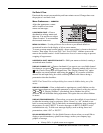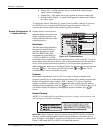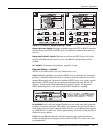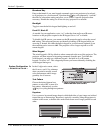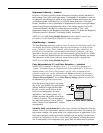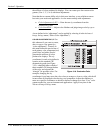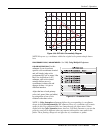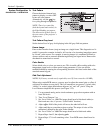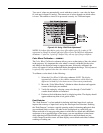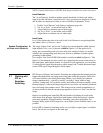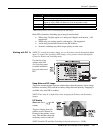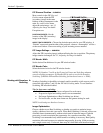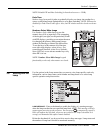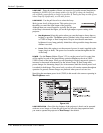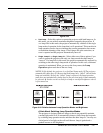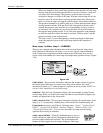
Section 3: Operation
RPMSP & CSP70-D100U User’s Manual 3-41
.
Two sets of values are automatically saved with these controls—one value for Input
#1, and one for Input #2 (analog). The current set of values depends on which source
is in use. This enables a source to be processed correctly via 2 different inputs.
Figure 3.22. Using “Odd Pixel Adjustment”
NOTES: 1) Adjust offset before gain, since offset affects gain. 2) A value of 128
represents no change in normal odd pixel offset or gain. 3) Odd Pixel Adjustment
eliminates “1 pixel on, 1 pixel off” artifact only, not any type of larger artifacts.
Color Wheel Calibration
— SUBMENU
The Color Wheel Calibration submenu allows you to set the timing of the color wheel
in the projector. It is important the color wheel is correctly calibrated for the colors
and shades in the displayed image to appear the same. Incorrectly calibrated, the
colors will appear in various unmatched shades throughout the image. This adjustment
is typically only required when the color wheel is replaced.
To calibrate a color wheel, do the following:
1. Select the Color Wheel Calibration submenu. NOTE: The display
automatically changes to the red/blue ramp pattern, which shows the
difference in shades of color between two corners most prominently.
2. Move the “Color Wheel Delay” slidebar in either direction until opposite
corners of the display are matched.
3. Verify this setting by selecting a new color through “Color Enable” –
corners should remain well matched.
4. Perform a final calibration check, by displaying white. The display should
appear without any hint of red, green or blue.
Peak Detector
The “Peak Detector” is a fast method for defining individual input levels, and can
improve the accuracy of input levels set by the Auto Input Level function. Enabling
the “Peak Detector” activates a special operating mode for detecting only pixels that
are considered black or white—all other levels are displayed as a mid-level gray.
When used with a 16-step grayscale pattern in which the two black and white bands
are known to be at opposite edges of the image, you can watch these isolated areas
while adjusting individual blacklevels and input drives until both bands are just
visible. Images from this source will then display correct blacks and whites without
crushing or washing out.



